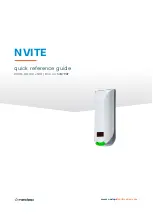
TX56/56A and TX57/57A Installation Manual
5 April 2022
01776-00-01
Issue AD
______________________
Page 34
Trig Avionics
5.6 Interface Details
5.6.1
Speaker Output
The speaker output can drive a 4 ohm or greater cabin speaker. The speaker
should be rated at 4 watts or higher. The speaker outputs received radio audio
and the aux audio input, but not the music or the transmitter sidetone.
5.6.2
Headphone Outputs
The TX56 can drive two sets of headphones. The output is stereo and is
intended for headsets of 150 to 600 ohm impedance.
The radio also works correctly when a mono headset is plugged into a stereo
socket, or can be wired for mono headphones sockets.
5.6.3
Mono Com Audio Output
This output is used to drive a conventional 600 ohm audio panel input. Note
that only the received radio audio and transmitter sidetone will be output;
music and aux audio will NOT be present.
5.6.4
Transmit Interlock
When two communication radios are mounted in an aircraft the transmit
interlock input of one can be connected to the transmit PTT key of the other
radio. When the other radio transmitter is keyed, the squelch threshold of this
radio is increased to minimise break-through between one radio and the other.
Note: To improve the performance when using two radios, the
antennas should be as far apart as practical – for example on the top
and bottom of the fuselage.
5.6.5
Lighting Bus Input
The TX56 will adjust the brightness of the front panel switch lighting
according to the voltage on the lighting bus input. The lighting bus voltage is
automatically adapted to the aircraft bus voltage.
If no lighting bus input is detected, the radio will automatically control the
front panel lighting based on the ambient light sensor.
















































